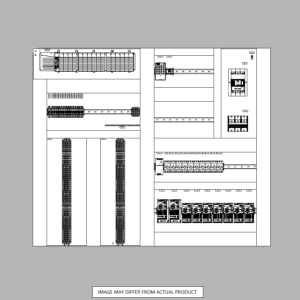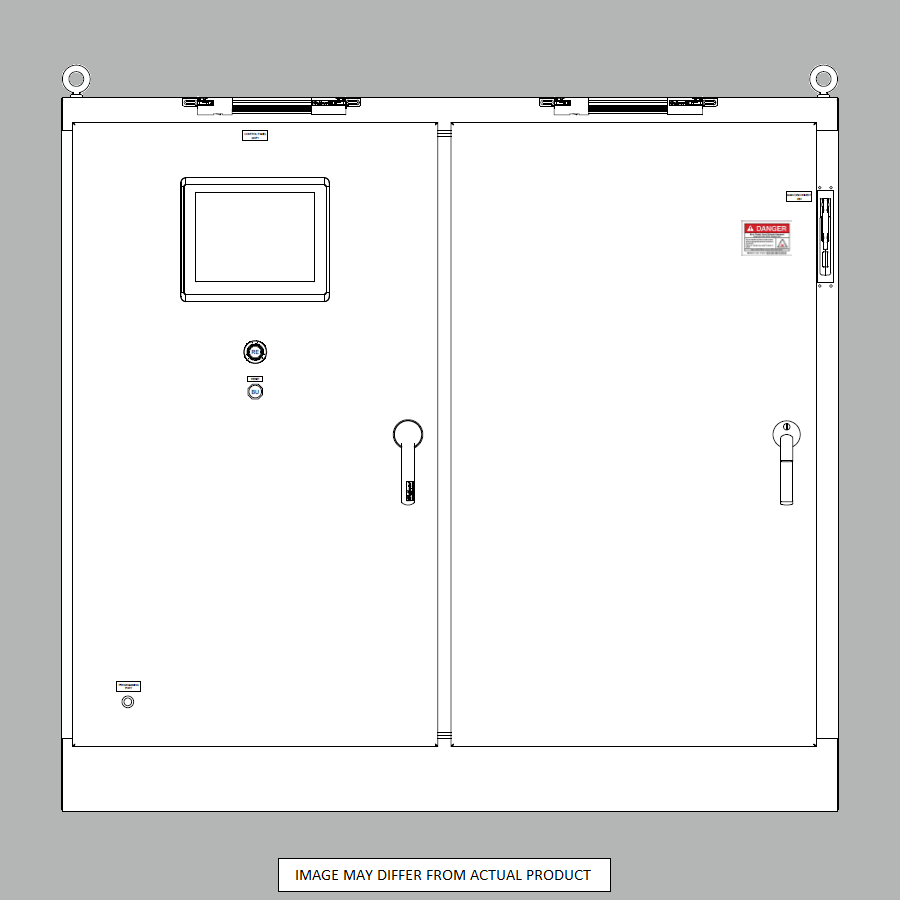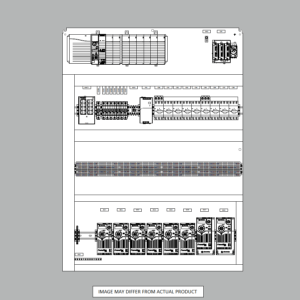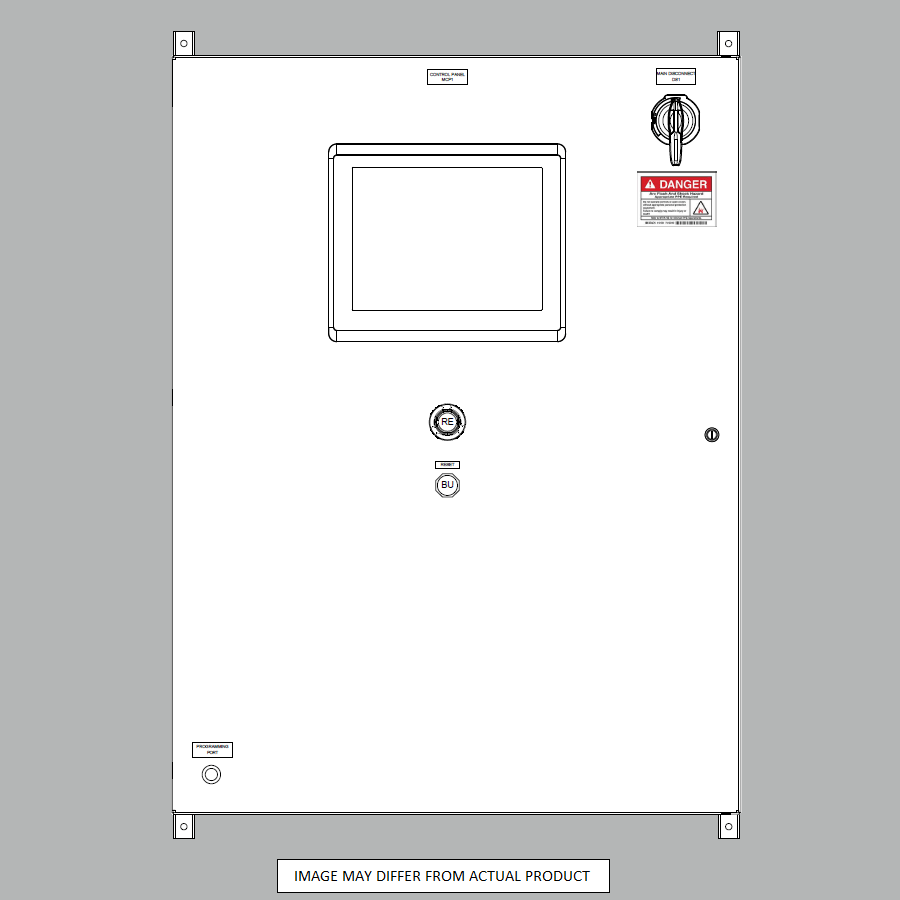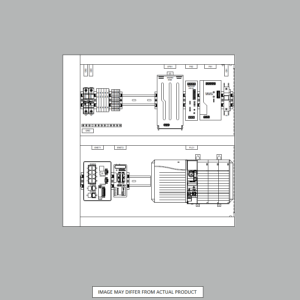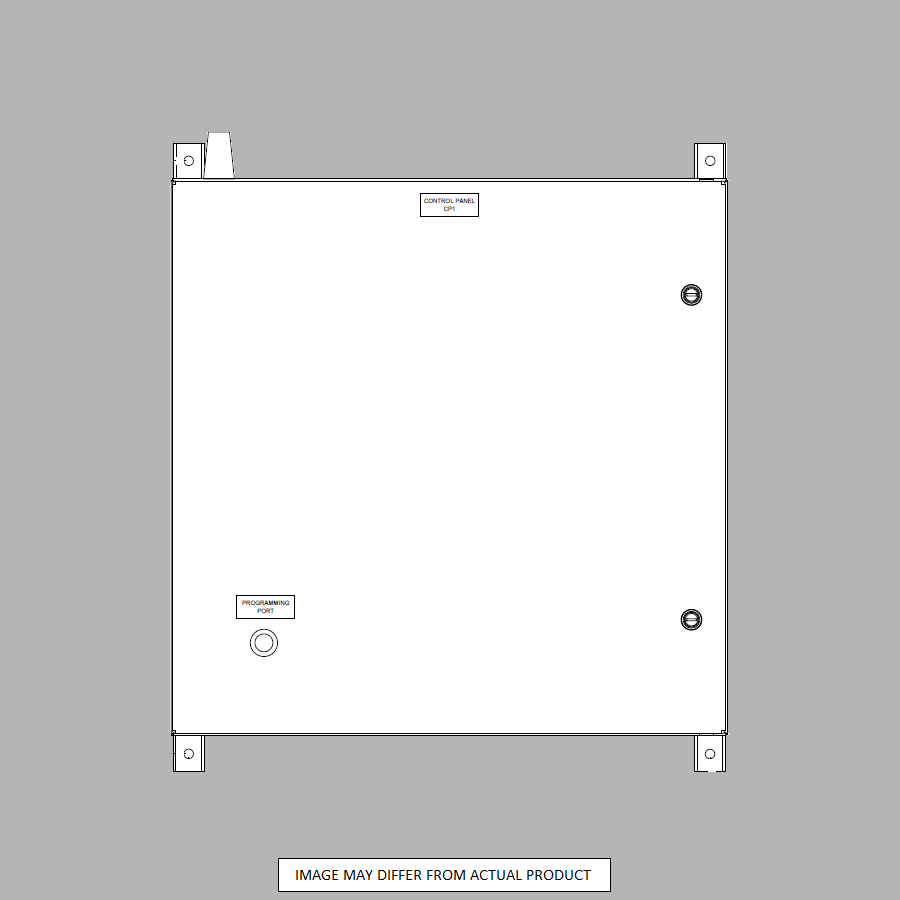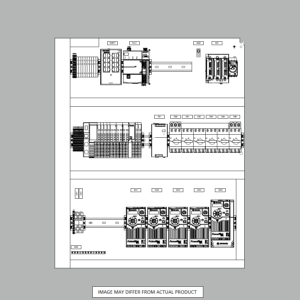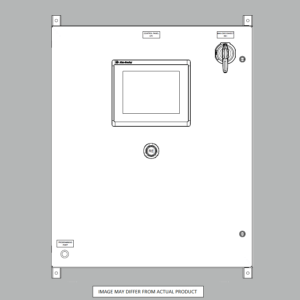SCADA Systems: Mastering Supervisory Control
In today’s fast-paced industrial landscape, efficient monitoring and control of operations are paramount. Enter SCADA (Supervisory Control and Data Acquisition) systems—the powerhouse solutions that revolutionize how businesses oversee and manage critical processes. SCADA systems are crucial for ensuring smooth and optimized operations across various industries.
This comprehensive guide will unveil SCADA’s inner workings, highlighting its immense value and wide-ranging applications. Buckle up and get ready to unlock a world of operational excellence!
What is a SCADA System?
A SCADA (Supervisory Control and Data Acquisition) system is a powerful combination of software and hardware components designed to monitor, control, and optimize industrial processes. It serves as a centralized platform from which operators can supervise and manage field devices, machinery, and equipment remotely.
SCADA systems collect real-time data from various sensors, programmable logic controllers (PLCs), and remote terminal units (RTUs) scattered across a facility or multiple sites. This data is then transmitted to a central control room, where it is processed, analyzed, and presented to operators through user-friendly interfaces known as Human-Machine Interfaces (HMIs).
How Does a SCADA System Work?
A typical SCADA system comprises several interconnected components facilitating real-time monitoring, control, and data acquisition. Understanding the SCADA architecture is crucial to appreciate how these systems operate. Here’s a breakdown of how a SCADA system works:
- Field Devices and Sensors: These devices, such as PLCs, RTUs, and various sensors, are installed at remote locations to monitor and collect data from industrial equipment, processes, and environmental conditions.
- Communication Network: The collected data is transmitted from the field devices to the central control room via communication networks, including wired or wireless technologies like Ethernet, radio, or cellular networks.
- Central Control Room: This is the heart of the SCADA system, where the data is received, processed, and displayed on HMIs. Operators can monitor real-time data, analyze historical trends, and issue control commands to the field devices from this central location.
- HMI (Human-Machine Interface): HMIs provide a user-friendly graphical interface that allows operators to visualize and interact with the SCADA system. They display the data collected from the field devices, enabling operators to monitor and control the industrial processes efficiently.
- Database and Historian: SCADA systems often include a database and historian component to store and archive historical data for future analysis, reporting, and troubleshooting purposes.
- Control Commands: In addition to monitoring, SCADA systems allow operators to send control commands from the central control room to the field devices, enabling remote control and adjustment of industrial processes.
Key Components of a SCADA System
A typical SCADA system comprises several key components that ensure seamless monitoring, control, and data acquisition. These components include:
- Remote Terminal Units (RTUs): RTUs are field devices that collect data from various sensors and transmit it to the central control room. They can also receive control commands and execute them at the field level.
- Programmable Logic Controllers (PLCs): PLCs are industrial computers that control and automate industrial processes based on programmed logic and sensor input. They are crucial in many SCADA systems, allowing for the automatic control of various devices and methods.
- Supervisory System: The supervisory system, often called SCADA software or HMI (Human-Machine Interface), is the central component that receives data from field devices, processes it, and displays it to operators in a user-friendly manner.
- Communication Infrastructure: SCADA systems rely on a robust communication infrastructure, such as wired or wireless networks, to facilitate data transfer between field devices and the central control room.
- Databases and Historians: These components store and archive real-time and historical data for analysis, reporting, and troubleshooting.
- Alarm and Event Management: SCADA systems typically include alarm and event management capabilities, enabling operators to receive real-time alerts and notifications about critical situations or deviations from normal operating conditions.
- Reporting and Analytics: Many SCADA solutions offer reporting and analytics tools that allow operators to generate reports, analyze historical data, and identify trends or potential issues.
Benefits of Implementing a SCADA System
Implementing a SCADA system can provide numerous benefits to industrial operations, including:
- Remote Monitoring and Control: SCADA systems allow operators to monitor and control processes from a centralized location, reducing the need for on-site personnel and enabling more efficient resource allocation.
- Increased Efficiency and Productivity: By providing real-time data and enabling remote control, SCADA systems help optimize processes, reduce downtime, and improve overall productivity.
- Improved Decision-Making: Access to real-time data and historical trends enables operators and managers to make informed decisions based on accurate and up-to-date information.
- Enhanced Safety and Compliance: SCADA systems can help ensure compliance with safety regulations and industry standards by monitoring critical parameters and providing alerts when deviations occur.
- Predictive Maintenance: SCADA systems can help with predictive maintenance strategies by analyzing historical data and identifying patterns, reducing unplanned downtime and extending equipment lifespans.
- Cost Savings: Automating processes, reducing manual labor, and optimizing resource utilization can result in significant cost savings for industrial operations.
Real-World Applications of SCADA Systems
SCADA systems are widely employed across various industries to monitor and control critical processes. Some common applications include:
- Oil and Gas: SCADA systems monitor and control pipelines, pumping stations, refineries, and offshore platforms in the oil and gas industry.
- Water and Wastewater Management: SCADA systems are crucial for monitoring and controlling water treatment plants, distribution networks, and wastewater collection systems.
- Power Generation and Distribution: Utilities rely on SCADA systems to monitor and control power plants, substations, and transmission grids.
- Manufacturing: SCADA systems monitor and control manufacturing processes, assembly lines, and automation equipment.
- Transportation: SCADA systems monitor and control traffic signals, railway systems, and airport operations.
- Building Automation: SCADA systems can monitor and control building systems, such as HVAC, lighting, and access control.
- Renewable Energy: Wind farms and solar power plants often utilize SCADA systems to monitor and control their devices and processes, optimizing energy production and distribution.

Water and Wastewater SCADA Application by Allen-Bradley

Oil and Gas Production SCADA Application by Allen-Bradley
Choosing the Right SCADA Software Solutions
With the vast array of SCADA software solutions available, selecting the right one for your organization can be challenging. Different SCADA vendors offer many software solutions, each with its own features and capabilities. Here are some factors to consider when choosing a SCADA software solution:
- Scalability and Flexibility: Ensure that the SCADA software can scale to meet your organization’s growing needs and is flexible enough to integrate with other systems and technologies.
- User-Friendly Interface: Look for an intuitive, user-friendly solution that allows operators to monitor and control processes easily.
- Reporting and Analytics Capabilities: Evaluate the software’s reporting and analytics features to ensure it meets your organization’s data analysis and decision-making requirements.
- Cybersecurity Features: Choose a SCADA software solution that prioritizes cybersecurity and offers robust security features to protect your systems from cyber threats.
- Support and Training: Consider the vendor’s level of support and training and the availability of documentation and online resources.
- Integration Capabilities: Assess the software’s ability to integrate with existing systems, such as PLCs, RTUs, and other industrial control systems.
- Industry-Specific Features: Some SCADA software solutions may offer industry-specific features or templates tailored to your particular sector, which can simplify implementation and improve efficiency.
Integrating SCADA with Other Industrial Systems
Modern industrial operations often involve many systems and technologies working together to ensure efficient and streamlined processes. Integrating SCADA systems with other industrial systems can unlock numerous benefits, including improved data flow, enhanced operational visibility, and better decision-making capabilities. Here are some examples of how SCADA systems can be integrated:
- Enterprise Resource Planning (ERP) Systems: Integrating SCADA with ERP systems can provide a comprehensive view of operations, enabling better decision-making and resource allocation.
- Manufacturing Execution Systems (MES): Combining SCADA and MES systems can optimize production processes, improve quality control, and enhance overall operational efficiency.
- Asset Management Systems: By integrating SCADA with asset management systems, organizations can better track and manage their assets, enable predictive maintenance, and extend equipment lifespans.
- Building Management Systems (BMS): SCADA systems can be integrated with BMS to monitor and control building systems, such as HVAC, lighting, and access control, improving energy efficiency and occupant comfort.
- Internet of Things (IoT) Devices: Integrating SCADA with IoT devices can provide real-time data from various sensors and connected devices, enabling more comprehensive monitoring and control.
- Historian and Data Warehousing Systems: SCADA systems can be linked to historian and warehousing systems, allowing long-term data storage and advanced analytics capabilities.
Cybersecurity Considerations for SCADA Systems
As SCADA systems play a critical role in industrial operations, ensuring their cybersecurity is paramount. Cybersecurity threats can have severe consequences, ranging from data breaches to disruptions in critical infrastructure. To mitigate these risks, SCADA systems must incorporate robust cybersecurity measures. Here are some key cybersecurity considerations for SCADA systems:
- Access Control and Authentication: To prevent unauthorized access to SCADA systems, implement robust access control mechanisms and authentication protocols.
- Network Security: Secure communication networks by employing firewalls, virtual private networks (VPNs), and intrusion detection and prevention systems (IDS/IPS).
- Software Updates and Patches: SCADA software should be regularly updated, and security patches should be applied to address vulnerabilities and mitigate potential cyber threats.
- Physical Security: To protect SCADA hardware components such as PLCs and RTUs, implement physical security measures, and restrict access to authorized personnel.
- Employee Training: Provide regular cybersecurity training to SCADA operators and personnel to raise awareness about potential threats and best practices for secure operations.
- Incident Response Plan: Develop and regularly test an incident response plan to ensure prompt and effective action during a cybersecurity breach or incident.
- Compliance and Standards: Adhere to industry-specific cybersecurity standards and regulations, such as the IEC 62443 series for industrial automation and control systems, to ensure compliance and maintain a robust security posture.
Future Trends and Advancements in SCADA Technology
The SCADA industry is constantly evolving and driven by technological advancements and the ever-changing needs of industrial operations. Here are some exciting future trends and advancements in SCADA technology:
- Cloud-Based SCADA Solutions: The adoption of cloud computing is gaining traction in the SCADA industry, offering scalability, remote access, and reduced infrastructure costs. Cloud-based SCADA systems allow operators to monitor and control processes from anywhere worldwide, enabling greater flexibility and accessibility.
- Integration with Artificial Intelligence and Machine Learning: AI and ML technologies are integrated into SCADA systems to enable predictive analytics, automated decision-making, and optimized processes. These advanced capabilities can significantly improve efficiency, reduce downtime, and enhance operational performance.
- Increased Cybersecurity Measures: As cyber threats evolve, SCADA systems will implement advanced cybersecurity measures, such as blockchain technology, enhanced encryption methods, and continuous monitoring and threat detection capabilities.
- Edge Computing and IoT Integration: Integrating edge computing and IoT devices will provide SCADA systems with more granular data collection and real-time analysis capabilities, enabling faster decision-making and improved responsiveness to changing conditions.
- Augmented Reality and Virtual Reality: AR and VR technologies are being explored to enhance SCADA user interfaces and provide operators with immersive training experiences. These technologies can improve situational awareness, facilitate remote collaboration, and streamline maintenance and troubleshooting tasks.
- Interoperability and Open Standards: Adopting open standards and interoperability protocols, such as OPC Unified Architecture (OPC UA), will facilitate seamless integration between SCADA systems and other industrial systems, promoting greater operational efficiency and data sharing across different platforms.
FAQs
What is the difference between SCADA and HMI?
While often used interchangeably, SCADA and HMI are distinct components of an industrial control system. SCADA is the overall system enabling monitoring, control, and data acquisition. At the same time, HMI (Human-Machine Interface) is the graphical user interface that allows operators to interact with the SCADA system. The HMI software displays the data collected from the field devices and provides a platform for operators to monitor and control the processes.
Can SCADA systems be used for small-scale operations?
Absolutely! SCADA systems can be implemented in both large-scale and small-scale industrial operations. Many SCADA software solutions are scalable and can be tailored to meet the specific needs of different-sized businesses. SCADA systems can provide valuable monitoring and control capabilities in a large manufacturing plant or a small water treatment facility.
How secure are SCADA systems?
SCADA system security is a top priority for vendors and users alike. Modern SCADA systems incorporate robust cybersecurity measures, such as access controls, encryption, and firewalls, to protect against cyber threats. However, to maintain a strong security posture, it’s essential to implement comprehensive security protocols, regularly update software, and train personnel. Additionally, adhering to industry standards and best practices, such as those outlined in the IEC 62443 series, can further enhance the security of SCADA systems.
Can SCADA systems be integrated with legacy equipment?
SCADA systems can often be integrated with legacy equipment using appropriate communication protocols and hardware interfaces. This allows organizations to leverage their existing infrastructure while benefiting from modern SCADA systems’ features and capabilities. However, it’s important to carefully assess the compatibility and potential limitations when integrating legacy equipment with new SCADA solutions.
How often should SCADA software be updated?
The frequency of SCADA software updates depends on various factors, such as the vendor’s release schedule, security patches, and new feature additions. It’s generally recommended that SCADA software be kept up-to-date by regularly applying updates and patches to ensure optimal performance, security, and compatibility with other systems. Vendors, such as Allen-Bradley, typically provide regular updates to address bugs and vulnerabilities and introduce new functionalities.
Summary
In conclusion, SCADA systems are indispensable tools for modern industrial operations, enabling efficient monitoring, control, and optimization of critical processes. Organizations can leverage this powerful technology to enhance productivity, improve decision-making, and achieve operational excellence by understanding SCADA systems’ key components, benefits, and applications. Remember:
- SCADA systems provide industrial processes with real-time monitoring, control, and data acquisition capabilities.
- They comprise field devices, communication networks, central control rooms, and user interfaces (HMIs).
- The SCADA architecture is designed to facilitate efficient data flow, control commands, and system integration.
- SCADA systems offer numerous benefits, including remote monitoring, increased efficiency, and improved safety.
- They are widely used in various industries, such as oil and gas, utilities, manufacturing, transportation, and renewable energy.
- Choosing the SCADA software solution requires considering scalability, user-friendliness, and cybersecurity features.
- Integrating SCADA with other industrial systems can unlock synergies and drive operational excellence.
- Cybersecurity is paramount for SCADA systems, and robust measures should be implemented to mitigate cyber threats.
- The future of SCADA technology holds exciting advancements, such as cloud computing, AI/ML integration, and enhanced cybersecurity measures.
Embrace the power of SCADA systems and unlock a world of operational efficiency, real-time insights, and seamless control over your industrial processes. SCADA solutions are crucial for optimizing operations, improving safety, and driving business success, whether managing a large-scale manufacturing facility, a power generation plant, or a water treatment system. Contact Automation Ready Panels now and let’s discuss your SCADA system requirements.
SHOP NOW
-
Large Process Automation: Panelview 5000, ControlLogix 5580
$21,389.00 Select options -
Small Process Automation: Panelview 5000, ControlLogix 5580
$17,999.00 Select options -
Small Process Automation: ControlLogix 5580, UPS Battery Backup, Cellular Modem
$16,999.00 Select options -
Advanced Automation: Panelview 5000, Safety CompactLogix 5380
$8,499.00 Select options


